Do Boxing Gloves Hurt More Than Bare Fists? (Damage Analysis)

Does Boxing with gloves hurt more than bare-fist boxing?
While many believe gloves reduce pain because fighters punch with maximum force without hurting their hand, research tells us a different story.
Bare fists can pack a punch! Studies have shown that bare fist punches produce a whopping 776 lbs of force, which is actually higher than the 641 lbs of punching force delivered with boxing gloves. However, boxing gloves increase the impact area so the pain perception is more with boxing gloves.

Bare Fists Vs Boxing Gloves – Which Hurts More?
Bare fist boxing leaves a boxer’s knuckles and hands vulnerable to fractures, cuts and bruises.
When a boxer lands punches with bare, closed fists, his knuckles are directly in contact with the impact region. It means that some of the punch force is redistributed back into the boxers’ fists and tendon tissues.
Tendon tissues are very thin and closed fists put a lot of pressure on these soft tissues. The impact force juries the soft tendon tissues surrounding the knuckles leading to pain, inflammation and immobility.
Punch Power – Bare Fists Vs Boxing Gloves Vs MMA Gloves
Watch this fascinating Research:
This experiment compares the punch force with different gear: bare fists, boxing gloves, and MMA gloves.
Bas Rutten, a former UFC fighter, participated in the experiment and struck a heavy bag equipped with punch force sensors.
The measured forces for each punching method were:
- Bare Fists: 776 lbs
- MMA Gloves: 651 lbs
- Boxing Gloves: 641 lbs
The results were surprising, showing that punches with bare fists generated the most force, followed by punches with MMA gloves and then boxing gloves. These findings offer valuable insights into the impact of different gears on punch force.
Punch Power Generated From Bone Strength

Bones are nature’s fascinating strength examples. Bones are 3x lighter but have the same compressive strength as steel. Similarly, bones’ elastic modulus is the same as concrete but bones have 10x stronger compression.
Another interesting fact is that your skeletal muscle can bear pain 20x more than its actual weight.
What is the reason behind this astonishing bone strength? Bones have a microstructure of collagen fibres which are surrounded and solidified by dense surrounding materials.
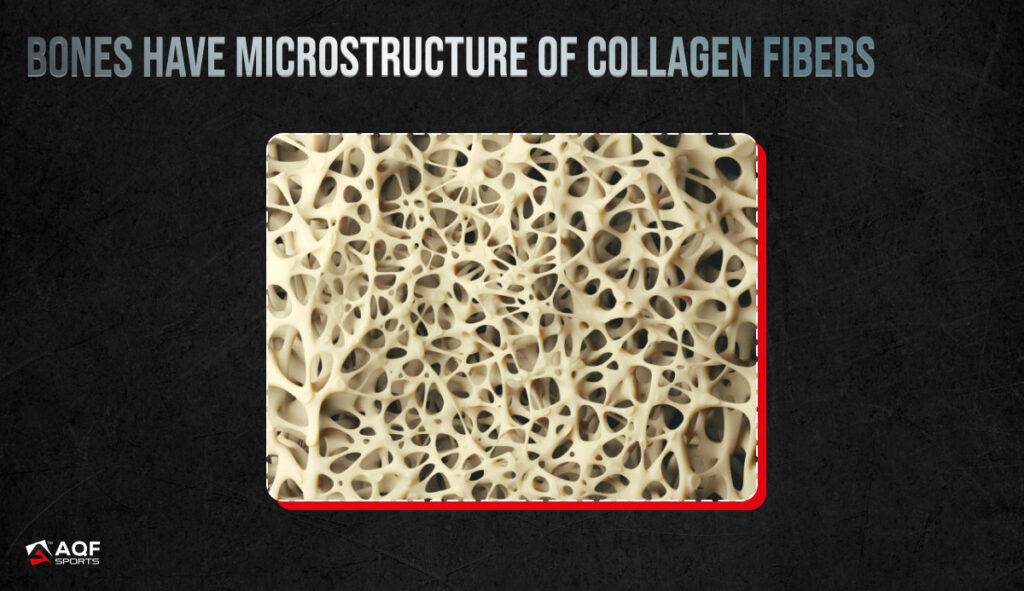
Punch Power Factors
The punching power relies on more than just arm strength. Almost your entire muscle system, including hip rotation and fast-twitch muscle fibres, contribute to generating punch power.
Bone density and fist size also affect the punching power when comparing punches from boxers of the same body weight.
Hand acceleration is influenced by hip rotation, technique, precision, and the number of fast-twitch muscle fibres in your muscles.
Measuring Punch Force
Punch force is commonly measured in pounds per square inch (psi). Research on boxers showed that their punches averaged around 776 psi, with flyweights averaging 447 psi and heavyweights reaching an average of 1066 psi. [1]
We can also determine the punch force in newtons.
The punch force (F) is a multiplicand of Boxer’s body mass (M) and punch speed acceleration (A). It is important to note that surface area plays an important role in determining the impact force.
An Average person’s punch force is around 800-1200 Newtons.
- Amateur boxers generate an average of 2500 Newtons of punch force on each strike.
- Elite heavy-weight boxers can punch with a force as much as 4000 Newtons.
Now, let’s see the impact of boxing gloves on punch force.
As discussed, punch power is measured in psi (pounds per square inch), which indicates the pressure a punch applies to the impact surface.
The average impact area of a punch with boxing gloves is around four square inches.
It means that boxing gloves increase the impact area which also increases the punch power.
An average amateur boxer generates approximately 776 psi punch which converts to 3104 lbs punch force (776 psi x 4 square inches).
Read More: How to Punch Harder? Mistakes to Avoid & Tips to Follow
Boxing Punches Biomechanics and Technique
When boxers throw punches, it’s not just about muscle strength. It’s a combo of smart moves to channel the force from within.
During a punch, force is generated through a combination of anatomical components and biomechanical principles.
Boxers generate force by pushing their legs into the ground and utilizing strong hip and thigh muscles. They rotate their hips and torso in the direction of the punch to generate the punch force.
The core muscles, particularly the abdominal and oblique muscles, stabilize the upper body and transfer force from the lower body to the upper body.
Boxers use their shoulder and arm muscles to land the punch and all the punch force is delivered into the target.
The key is to align the back of your hand to the front of your forearm.
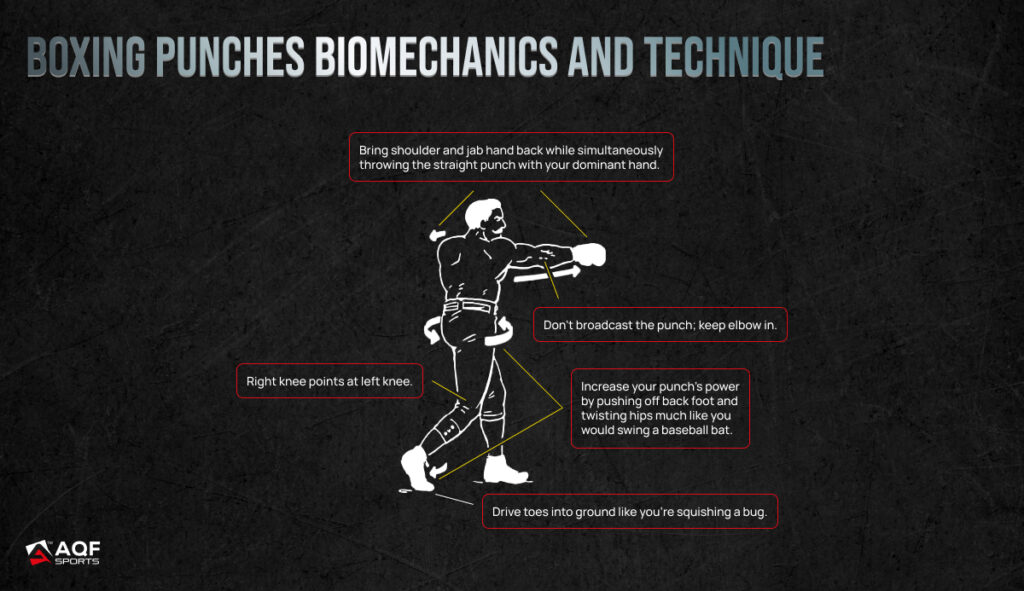
Bare-Fist Boxing Hand Injuries
Okay, let’s talk about what happens to your hand during bare-fist boxing.
Hand Fractures:
Bare fist Punching fractures your hand bones, especially the metacarpals (the small bones connecting your fingers to your wrist). Lacerations and hand fractures are the most widely reported boxing-related injuries.
Suggested Read: How to Protect Yourself from Serious MMA Injuries?
Bruises and Contusions:
You ever see those big, ugly bruises on a boxer’s knuckles? Yup, that’s what happens when you punch without gloves. The impact damages blood vessels, scrapes your skin and leaves painful marks.
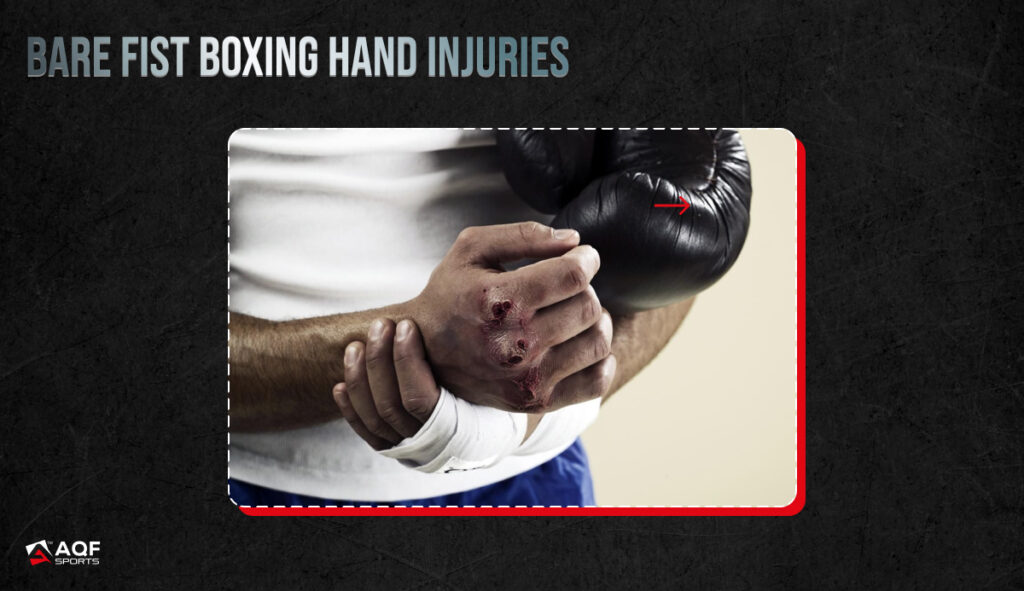
Sprains and Strains:
All that rapid punching movement and force can cause sprains and strains in your wrist, hand and forearm.
Cuts and Abrasions:
No protection mean your skin is exposed. So, when you punch, you will end up with cuts and abrasions.
Punching with bare fists may injure your soft tissues and tendons, such as:
- Extensor Tendons (on the back of the hand) are Strained or injured due to forceful hand muscle contraction.
- Flexor Tendons (palm side of the hand) are Prone to strain or injury because of awkward punches
- Collateral Ligaments (finger joints) may strain from powerful punches causing joint pain and immobility
- Palmar Fascia (palm tissue) may strain and get inflamed leading to immobility and poor grip strength
- Carpal Ligaments (wrist stability): Prone to strain or sprain, resulting in wrist pain and reduced motion.
- Ulnar and Radial Collateral Ligaments any excessive stress on these ligaments affects finger-to-hand connections
- Carpometacarpal Joint Capsules are located at the base of fingers. These capsules may get injured leading to pain and inflammation.
Suggested Read: A Definitive Guide to Wrapping Hands for Boxing

Now, why do these injuries happen?
When you punch without protection, there’s no cushion between the target and your hand blow. Your poor hand has to take all that force directly, leading to those painful injuries.
And how do they happen?
It’s pretty straightforward. When you throw a punch, the forceful impact on your bare hand can lead to fractures, bruises, and strains. Plus, if you don’t have your punching technique down pat, it increases the risk of injury even more.
When a punch lands on the target, the partial impact force is redistributed to the boxer’s fist and arm.
The small bones in the hand are susceptible to fracture.
Connective soft tissues and muscles in the hands, wrist and forearm are also prone to injuries.
Are Your Hands Supposed to Hurt After Boxing?
Partial boxing impact energy travels through your hand and knuckles. So if your hands hurt after an intense multi-round boxing session, don’t be surprised!
Boxing Gloves Protect Your Hands and Knuckles
Boxing gloves were created to make boxing safer back in the late 17th century. Back then, fights were bare-knuckle and pretty brutal. In 1743, an English boxer named Jack Broughton first came up with padded gloves for boxing.
As time went on, boxing gloves became more popular, especially in the 19th century. In 1867, they made boxing gloves use officially with the “Marquess of Queensberry Rules,” which said that fighters must wear padded gloves in matches.
Nowadays, all pro boxers wear gloves in their fights, including the famous world champions. These gloves provide important hand protection and follow safety rules set by boxing organizations. So, wearing gloves has become a standard and necessary part of the sport, keeping boxers safe while they compete.
Here is how boxing gloves protect the boxers:
Impact Absorption:
The padding in boxing gloves absorbs the punch force and reduces the risk of injuries to your hands and knuckles.
Prevent Cuts:
The outer layer of the gloves acts as a barrier which protects your knuckles against cuts and scrapes during punches.
Hand Alignment:
Boxing gloves help stabilise proper hand and wrist alignment during punches to reduce the risk of sprains.
Wrist Support:
Many boxing gloves come with wrist straps or wraps that provide extra support and minimize the risk of wrist injuries.
Long-Term Protection:
Gloves protect against long-term damage caused by repetitive strain during training.
Safe Sparring:
Gloves make sparring safer by reducing the intensity of punches.
Extended Training Sessions:
With hand protection, boxers can train for longer periods without worrying about injuries.
Check Out AQF Sports Boxing Gloves,
-
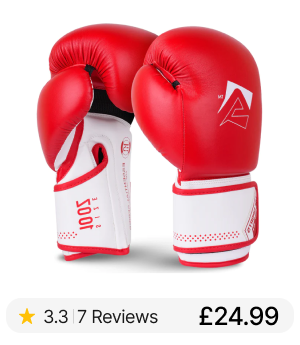
Boxing Training Gloves Essential Series
View Details -
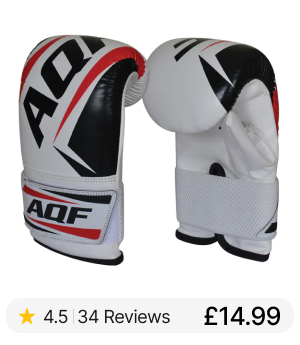
AQF Sports Boxing Bag Mitts Black
View Details -
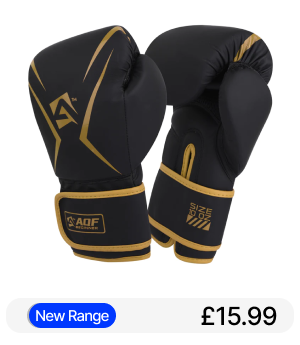
Boxing Training Gloves Beginner Series
View Details
How Bad Do Boxing Punches Hurt the Opponent? Pain Sensation Degrees
So, the big question is – “How bad do boxing punches hurt?” They hurt a lot!
The person getting punched may experience dull pain or sharp pain.
The pain from a punch depends on
- how cleanly it lands,
- where it lands, and
- how much force is behind it.

There are two primary types of pain from punches:
Dull Pain from Clean Punches:
When a punch lands cleanly on a less sensitive area, it results in a dull, heavy ache. It’s particularly when you get hit in the centre of your chest or shoulder.
The impact energy spreads out and you will feel a deep thudding spreading out in your body.
Dull pain is stronger and lasts longer. It’s hard to describe this kind of pain but it is something similar to getting punched on the arm multiple times or getting punched on the shoulder.
Stinging Pain from Powerful Punches to Sensitive Areas:
A punch to a more sensitive area, like the nose or jawline, causes sharp, stinging pain.
Sensitive areas have more nerve endings which are more reactive to external stimuli.
Sharp pain can eventually become dull pain if not treated but not vice versa.
When those punches land you will feel a tsunami of force hitting you. But remember, boxing isn’t just a wild brawl. It’s a skilful combination of power and technique where opponents respect each other’s boundaries.
Common Injuries During Boxing
Let’s face it – boxing injuries happen despite all the precautions. Bruises, strains, and fractures are part of the sport.
An interesting study on most common boxing injuries [2] shows that boxing punches hurt the following body regions most:
- Head/Face/Neck (89.8%)
- Upper extremities (7.4%) out of which
- Eye Region injuries account for 45.8% of total injuries
- Concussions account for 15.9% of total injuries
- Lacerations/Open wounds (0.75%)
Another interesting thing is pain perception varies from person to person and depends on genetics, training, and mental preparedness to deal with pain.
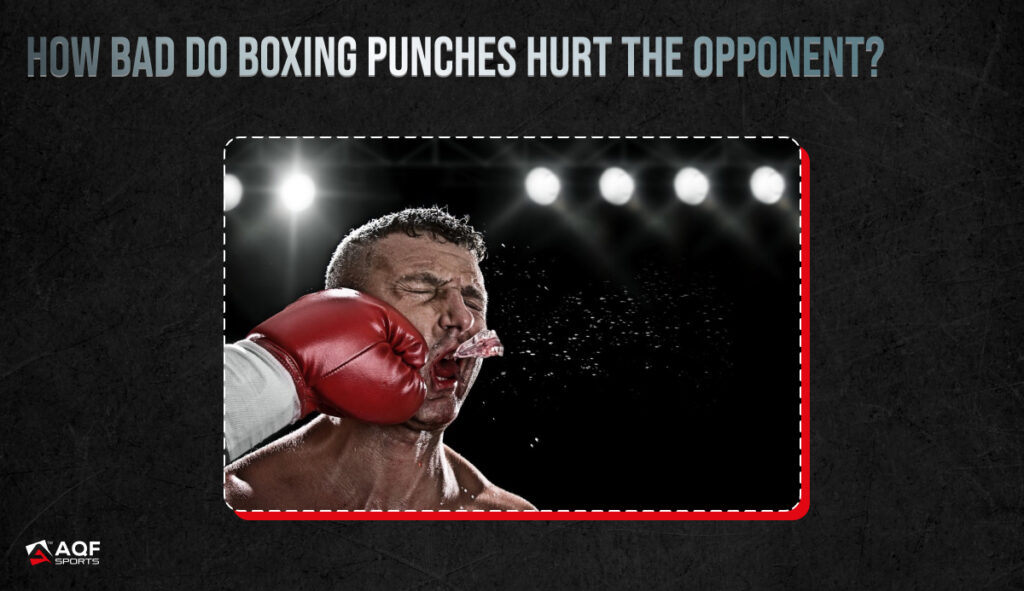
Some people handle clean punches like champs, while others feel intense pain.
Adrenaline rush during stress knockouts changes your pain perception.
During stressful situations, your body releases adrenaline which also triggers natural painkillers called endorphins.
Endorphins temporarily reduce or mask the pain perception and, as a result, you feel less pain from clean punches. This is a short-term effect and once the round is over, you must treat the area immediately.
Do Boxing Gloves Hurt More than MMA Gloves?
Here’s the deal: Boxing gloves are designed for striking, while MMA gloves are designed for striking AND grappling. That’s why MMA gloves are smaller and have open fingers to make grappling moves easier.
Weight and Padding
Boxing gloves have more padding and come in a variety of weights measured in ounces (oz). The more ounces they have, the more padding they pack in and the harder you can punch with them.
In boxing matches, you usually see boxers wearing 10 oz gloves. During sparring, they opt for the bulkier and softer 16 oz gloves. These gloves have padding all around to protect hands and block strikes.
On the flip side, MMA gloves have less padding. The standard competition MMA glove weighs only 4 oz and its padding is concentrated on the knuckles. For sparring and amateur competitions, 7 oz MMA gloves (sometimes 8 oz) are the preferred choice.
But here’s the kicker: Although MMA gloves cause more visible damage such as cuts and bruises, studies show that a bare-knuckle fist punch actually packs more force than a punch with either MMA or boxing gloves.
Boxing Gloves Vs MMA Gloves Design Difference
Now you might say, why use boxing gloves at all if they’re meant to cushion the hit?
The answer is that boxing gloves are designed to provide better hand protection so fighters can throw punches with full power, without worrying about where they land. This means longer fights and more damage to the opponent in multi-round bouts.
So, in a nutshell, while MMA gloves cause more visible damage like cuts and bruises, the boxing glove’s punch impact is deeper and more powerful.
Does it Hurt to Get Punched with Gloves?
Yes! In fact, getting punched with boxing gloves hurts more than bare fists. The reason is increasing surface area which lands more impact force on the target.
When a punch lands with force, the impact energy is transmitted through the gloves and into the opponent’s body. Depending on the punch force, impact location and area sensitivity, the person getting punched experiences varying pain.
Boxing gloves are designed to protect boxers’ hands – not the opponent’s body.
Do Boxing Gloves Interfere with Your Boxing Technique?
Not really. If anything, boxing gloves supplement your boxing technique along with your motor functions and cognitive abilities.
A fascinating study on boxers reveals that tough fighters deal with pain better than active sportsmen.
The researchers assigned 71 people two tasks to be done in pain and without pain.
The motor task was to throw a tennis ball at numbered targets in the right order. [3]
The cognitive was to check off numbers from one to twenty-five in the right order from a jumbled grid of numbers. Extra challenges like dummy targets for the motor task and extra numbers for the cognitive task were also added.
The results were truly remarkable: boxers felt less pain during each task as compared to regular individuals.
And that’s not all – even with increased pain, boxers’ performance didn’t suffer! It’s like pain couldn’t stop them from performing well.
Moreover, the pain didn’t affect the boxer’s cognitive and motor performance. This suggests that boxers have unique resilience against pain and are better able to handle tasks even when in pain.
Boxing gloves simply protect a boxer’s fists from strength power.
Can You Cut Someone with a Boxing Glove?
Yes, it is possible. Lacerations and cuts are common boxing injuries inflicted on opponents.
Boxing gloves are usually made of leather.
Leather has abrasive qualities so if you box hard enough, you can cut someone with a boxing glove punch.
Do Heavier Gloves Hurt More or Less? Glove Size Difference
Do heavier boxing gloves make punches harder? The answer is no. Although heavier gloves provide more padding, they won’t make your punches stronger.
The extra padding in boxing gloves is meant to protect your hands and reduce the risk of injury, which adds to the weight of the gloves.
In fact, wearing heavier gloves might slow down your punches and make them less powerful. The added weight requires more effort from your muscles, leading to fatigue and potentially affecting your punch speed.
Do Lighter Gloves Make You Punch Harder?
In boxing, lighter gloves, like 10oz ones, allow for faster and more forceful punches. They offer less resistance, enabling you to move your hands quickly and generate more force.
Heavier gloves, such as 16oz, provide more resistance due to their increased weight. They are often used for sparring, where finesse and power development are the focus. However, in actual competition, these heavier gloves may slow you down and weaken your strikes.
For sparring, using heavy boxing gloves is advisable to minimize the risk of injury to both you and your training partner. The added weight spreads the force of impact over a larger area, making the punches less intense and reducing the chance of significant injuries.
How Tight Should Gloves Feel?
Boxing gloves should snugly fit your hand and fingers – leaving sufficient room for finger movement. A well-fitting pair of boxing gloves doesn’t interfere with your punches and makes you feel more confident about your boxing technique. You don’t have to worry about it feeling too tight or falling off during a boxing session.
Should gloves fit tight?
If boxing gloves feel too tight when you first put them on, there is a good chance that they will constrict your movement. The reason is that your hands will swell a little due to boxing training exertion – and they will also sweat. So tight gloves mean restricted movements and discomfort.
Final Verdict: Is it Safer to Fight With Gloves?
Boxing gloves are designed to protect the boxers’ hands. A well-fitting pair of boxing gloves not only boosts a boxer’s confidence in the ring but also boosts their punching power. Boxing is all about respecting each opponent’s boundaries and showcasing your strength and skills. Wearing boxing gloves puts you in a better position to channel your power and land knockout blows on your opponents without causing significant injuries to yourself or others. Buying high-quality boxing gloves is truly an investment!
References:
[1] Average bodyweight boxer hitting power – SeminoleHighSchool
[2] Zazryn TR, Finch CF, McCrory PA 16 year study of injuries to professional boxers in the state of Victoria, AustraliaBritish Journal of Sports Medicine 2003;37:321-324.
[3] Sheffield, D., Thornton, C., & Jones, M. V. (2020). Pain and athletes: Contact sport participation and performance in pain. Psychology of Sport and Exercise, 101700. https://doi.org/10.1016/j.psychsport.2020.101700





